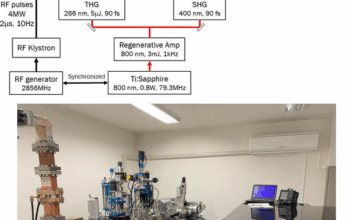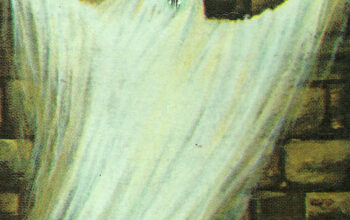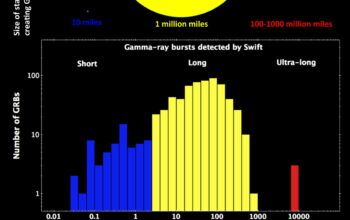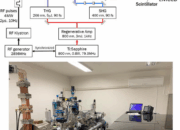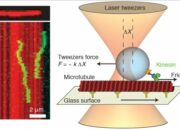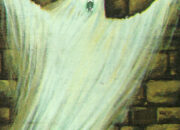Light, the quintessential emissary of the universe, traverses vast expanses, illuminating the realms of existence. In exploring whether light interacts with atoms, we embark on a journey through the invisible corridors of atomic interactions and the enigmatic existence, or lack thereof, of atomic shadows.
At its core, light is an electromagnetic wave, a phenomenon that envelops the cosmos in dance. Photons, the quantum units of light, bombard objects ceaselessly, penetrating the atmosphere and reaching nexus points, such as the minuscule atoms composing matter around us. But does this infinitesimal impact of light extend to the atomic scale? The answer resides in the intricate interactions governed by quantum mechanics.
To appreciate this connection, we must first comprehend what constitutes an atom. Atoms, the fundamental building blocks of all matter, consist of a nucleus, composed of protons and neutrons, surrounded by a cloud of electrons rendered by electric forces. This interplay of charges and the wave-particle duality of electrons serve as a backdrop for our investigation into the interaction of light with these entities.
When light encounters an atom, its quantum nature dictates the response. Photons can be absorbed by electrons, causing them to transition to higher energy states. This phenomenon—termed absorption—is akin to a dancer taking a leap into the air, momentarily suspended in a new stance before falling back down, releasing energy again in the form of light. This brief encounter illustrates light’s intimate relationship with the microcosms of atoms.
Importantly, this absorption is not equal across all atomic structures. Different elements and isotopes exhibit unique absorption spectra, akin to fingerprints, revealing the distinct wavelengths corresponding to their electronic transitions. Therefore, light can indeed “hit” atoms, resonating with their specific energies and eliciting perceptible responses. However, this interaction does not create a shadow in the conventional sense.
Shadows, as we understand them, emerge from the obstruction of light—an opaque object intercepting photons and preventing them from illuminating a surface behind it. Atoms, conversely, are not macroscopic bodies; rather, they exist in a domain where classical intuitions about shadows begin to dissolve. The particles that compose them do scatter light to some degree, but unlike larger objects, they do not obstruct it in a conventional manner. Instead, they interact in a nuanced ballet of light—allowing, absorbing, and emitting photons rather than merely blocking them.
Consider the implications of this interaction. When light encounters an atom, not only does it induce absorption, but it also facilitates scattering. An atom can absorb a photon and then re-emit it, a process that diffuses the light rather than creating a shadow. This is where the singularities of quantum mechanics unfold; the atom becomes a conduit of light, reinforcing the notion that shadows, in the traditional sense, become abstracted at such scales.
The notion of a shadow becomes further convoluted when we contemplate phenomena such as light scattering and refraction. When light traverses different media, the transition alters its pathway, reminiscent of a river bending around a bend. In a gas, for instance, light interacts with countless atoms, causing diffuse scattering, which mutes the clarity of its original source. The shadows formed in such processes are transient and weighted with complexities, devoid of the starkness observed in macroscopic shadows.
Moreover, the concept of a shadow extends into the realm of quantum uncertainty. According to Heisenberg’s uncertainty principle, the more precisely one property of a particle is known, the less precisely another can be known. This principle manifests in the unpredictable nature of photons when interacting with electrons. The idea of a sharp boundary, of light making a clear demarcation between light and dark, falters when confronted with the probabilistic nature of quantum mechanics.
The idea of light “hitting” atoms creates a parallelism with the concept of shadows; where we search for a dark outline, we may instead find a pattern of light and energy exchanges. The interactions between light and matter foreshadow the complex relationship of visibility, presence, and absence. In essence, atoms do not cast shadows; they generate myriad interactions that refract, scatter, and alter light as it journeys through their domains.
In the theater of the quantum world, light does indeed engage with atoms, but the shadows of which we speak do not conform to our tangible expectations. Instead, what resides within is a puzzle of interactions, exchanges, and resplendent phenomena, painting a picture that defies simplistic interpretations. Thus, the interplay of light and atoms transforms our understanding, revealing a universe laden with complexity, where perhaps we must reconsider what we define as presence and absence.
In conclusion, while light does indeed collide with atoms, generating a myriad of fascinating interactions, it does not cast shadows in the conventional sense. Instead, it serves as a transformative medium, weaving the tapestry of existence, where each thread vibrates with the brilliance of quantum interactions. The dance of atoms and light invites us to ponder broader questions—the nature of visibility, the limits of perception, and the intricate layers of reality that lie beneath the surface of what we can see. Ultimately, the rich fabric of atomic interactions with light inspires contemplation about the fundamental essence of our universe.

